On Wednesday, there were just a few tyre prints marking the the dusty farm-track that leads between Sid, the last town in Serbia, and Tovarnik, the first little village in Croatia. But by Thursday afternoon, every inch of it was scored with footprints. From little kids’ feet to big size 12s – what had been a placid surface just 24 hours earlier was now being ploughed in plumes of dust by an exodus of refugees.
Few better symbolised their desperation and determination than Mokhtar Allouf, a 23-year-old Syrian who could barely walk as he crossed over the bit of farmland that marks the Croatian border, and into the European Union. Shortly afterwards, he tugged up his shirt to reveal the cause of his limp. Between his shoulder-blades was the scar from when a Syrian soldier stabbed him with a bayonet in the spine during protests in Homs in 2011. Allouf was left paralysed for six months and four years on, he can only stagger.
“We Syrians are very strong and we will keep coming, we will keeping looking for safety,” Allouf said, leaning on the shoulder of his friend Ahmed. “Even if we have to walk there like this.”
This farm track was the latest frontier of the biggest refugee crisis Europe has seen in seven decades. After the slow-motion car crash of the summer, which saw the crucible of the crisis gradually move from the Greek islands through the Balkans to Germany, events are now on fast-forward, with flashpoints changing on a daily basis.
On Wednesday, the bottleneck was at Horgoš on Serbia’s border with Hungary, where Hungarian police fired teargas at crowds of refugees who tried to rush a border gate when they suddenly found their northward procession blocked. But by Thursday, after Serbian officials bussed thousands of people from its Hungarian border to its Croatian one, the flashpoint had moved 120 miles south west.
At first things seemed to go smoothly. People were dropped off easily enough in Sid. Then they walked through the cauldron of the late Balkans summer, and through a series of pancake-flat corn fields to find waiting trains and coaches, amid an initially warm series of media statements from Croatia’s prime minister.
But in Tovarnik, as the news spread that Croatia was open, and more than 5,000 people piled over the border, matters quickly unravelled. The government had not prepared enough transport for such a huge volume of people, nor enough water, and there were too few officials to provide information and direction to newcomers who had little idea of where they were.
Tempers soon frayed and, in the uncertainty and heat, hundreds of refugees rushed past police lines in a desperate effort to grab the few available places onboard trains heading north to Zagreb and Slovenia. A day after chaos unfolded at the gates of Hungary, refugees were experiencing new traumas within the gates of Croatia.
It was a scene that once again underscored the inability of European governments to comprehend and prepare for the continent’s biggest wave of mass migration since the second world war. On Wednesday, Croatia’s prime minister, Zoran Milanović, had optimistically declared the country was “ready to accept and direct those people”. But by Thursday, his government had discovered that this crisis is beyond what any single country can deal with on an unplanned, unilateral basis – even with the best of intentions.
Less than 24 hours after Milanović’s charitable declaration, interior minister Ranko Ostrojić backtracked. “Croatia will not be able to receive more people,” Ostrojić said, claiming that an earlier promise to create a human corridor to Slovenia was in fact only a pledge to provide a much shorter passage to Zagreb, the Croatian capital.
There was another reason for refugees to be worried: land-mines. Croatia has about 500 square kilometres of unexploded landmines spread across its territory, a leftover from the Balkan wars in the 90s. Around two square kilometres line the Serbo-Croat border, said Miljenko Vahtarić, assistant director at the Croatia Mine Action centre. They are clearly marked, and they lie some way from Sid but as thousands now scramble for the Croatian border, said Vahtarić, “there is always the possibility that somebody could enter these suspected hazardous areas and get wounded or even killed”.
In the face of such uncertainty, a smattering of refugees remained camped on the Hungarian border. Kawa, a 30-year-old agricultural engineer from north-eastern Syria, reckoned it was better to wait it out at the gates of Hungary until he got word that the Croatian route worked. “After Croatia is Slovenia,” Kawa said. “And we don’t know what Slovenia will do.”
But most simply shrugged: whatever happens, the road ahead is less dangerous than the places they have come from. Nowar Daoud, a 23-year-old archaeology student from Hasaka, north-east Syria, was one of the last to catch a bus from the Serbian border to Croatia. “We just have to have faith,” Daoud said shortly before he set off. “We’ll go and find out what’s happening. Maybe we can cross, maybe we can’t. We live in hope.”
As in every conversation on this refugee route, Daoud and his friends said that ultimately nothing will stop people fleeing the horrors of war. Halaz Shekhmous, an 18-year-old high school student travelling with Daoud and her brothers, summed things up: “We’re not afraid of anything because after Daesh” – the Arab slang term for Islamic State – “nothing scares us.”
Far away to the south, just after he crossed the dusty path that leads into Croatia, 40-year-old Amjad el-Omairi lifted up his shirt to make the same point. There on both his flanks were two foot-long scars, the result he said of a car bomb in Iraq. “I just want peace,” said Omairi, the owner of a lingerie shop. “And I’ll keep going even if I have to cross another sea to find it.”
by Patrick Kingsley of The Guardian

Migrants force their way through police lines at Tovarnik station to board a train bound for Zagreb (Jeff J Mitchell/Getty Images)

A man hold a child up as scuffle break out with police forming a cordon to direct migrants and refugees onto board buses at the train station in the city of Tovarnik (-/AFP/Getty Images)

Migrants walk down the motorway toward buses which will take them to Croatia at the Horgos border crossing with Hungary (Srdjan Stevanovic/Getty Images)
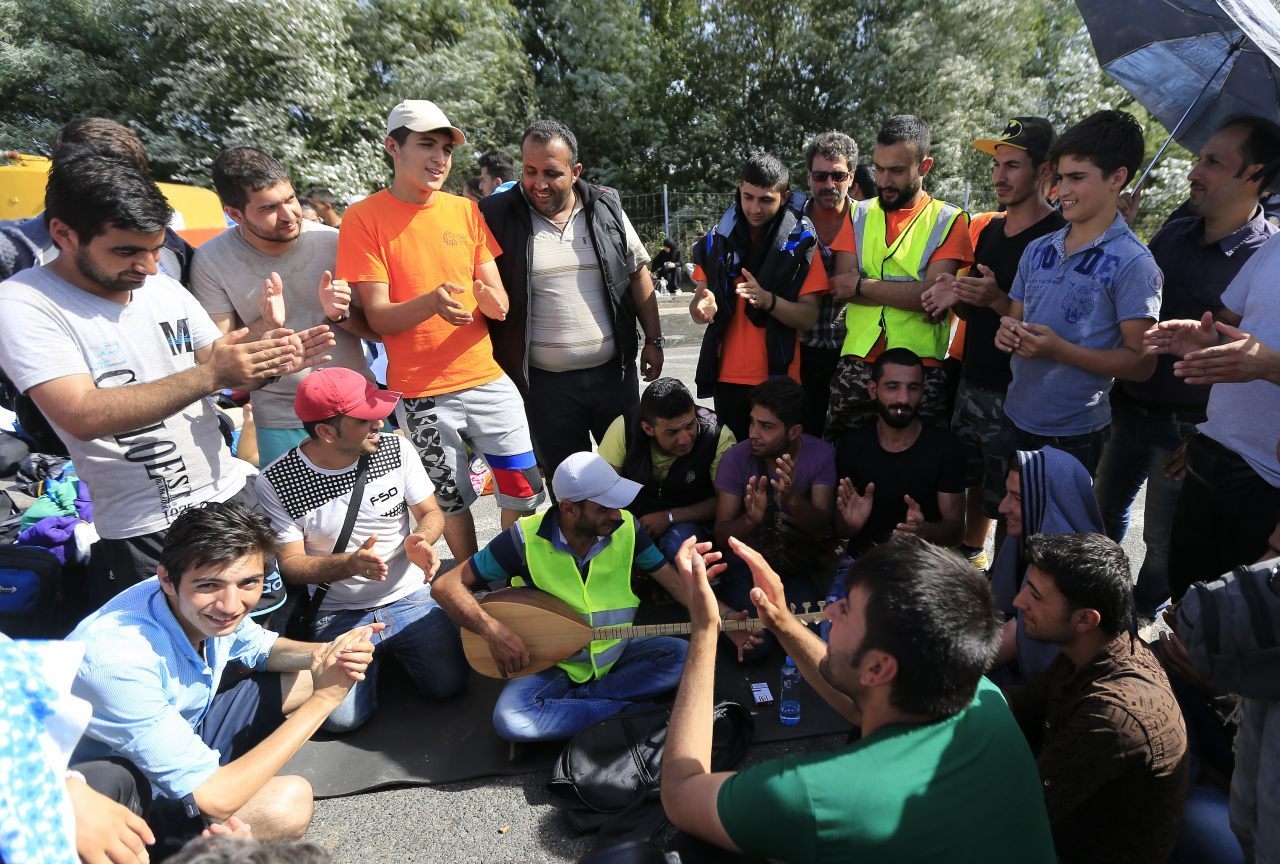
Migrants queue for buses which will take them to Croatia at the Horgos border crossing with Hungary. (Srdjan Stevanovic/Getty Images)
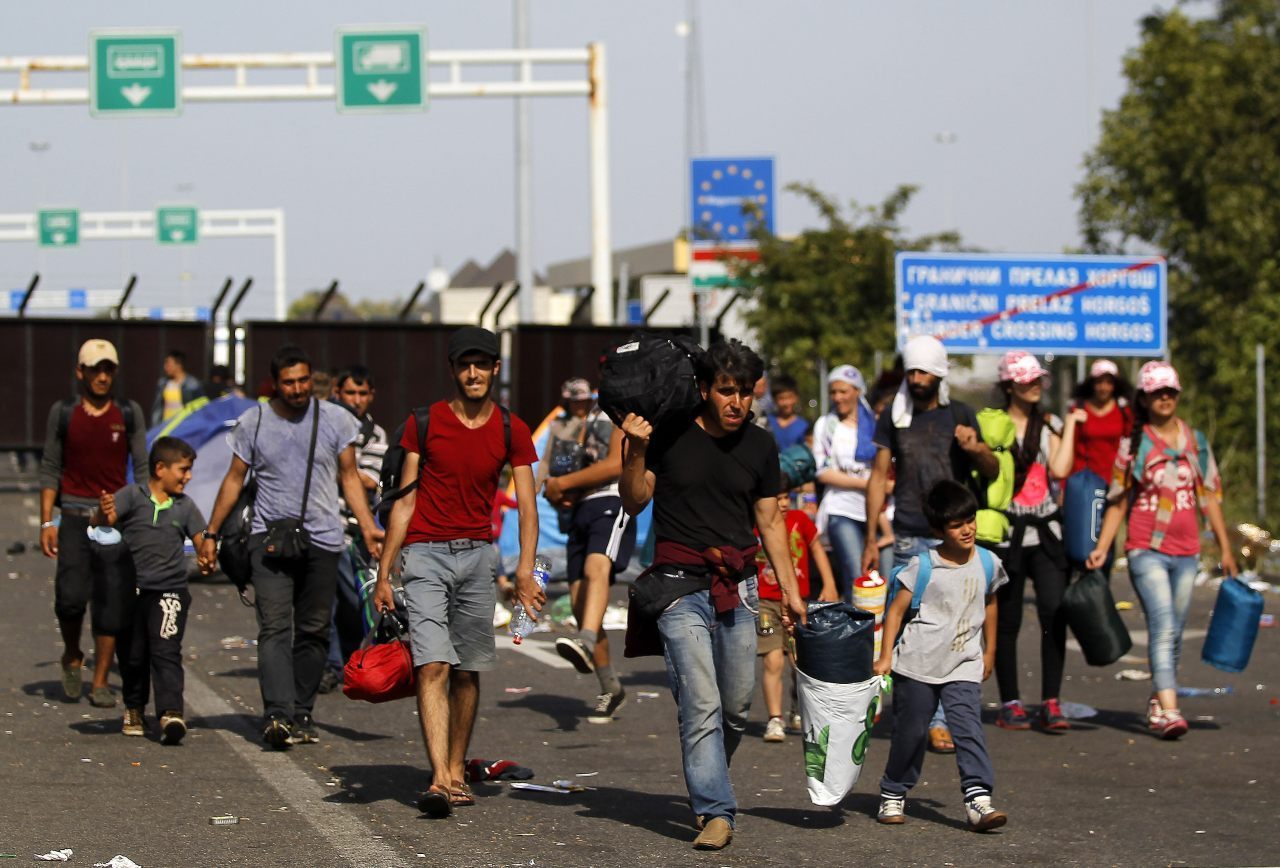
Migrants walk down the motorway toward buses which will take them to Croatia at the Horgos border crossing with Hungary (Srdjan Stevanovic/Getty Images)

Migrants wash themselves the morning after yesterday’s clashes with police at the border crossing with Hungary (Srdjan Stevanovic/Getty Images)
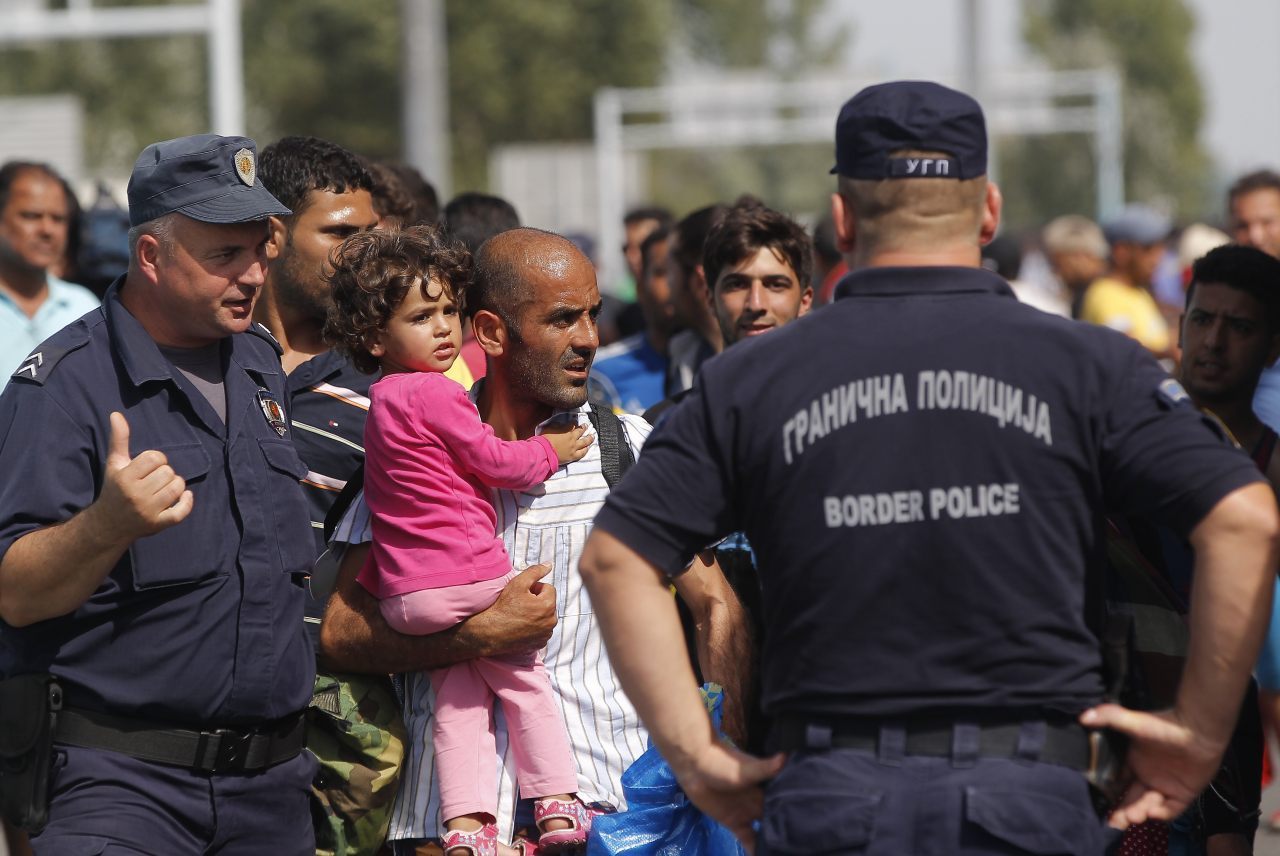
Migrants queue for buses which will take them to Croatia at the Horgos border crossing with Hungary. (Srdjan Stevanovic/Getty Images)
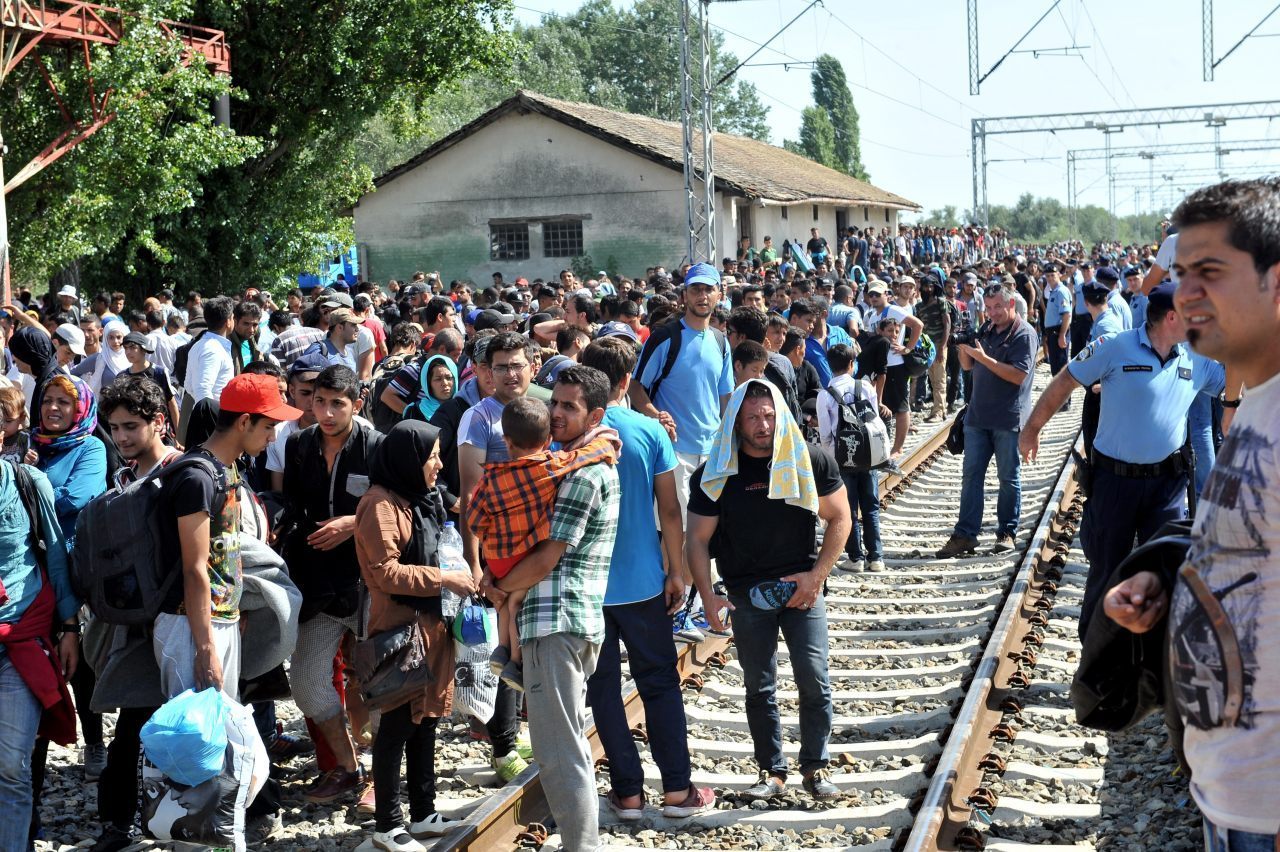
Migrants wait under the sun at a railway station, near the official border crossing between Serbia and Croatia. (ELVIS BARUKCIC/AFP/Getty Images)

Migrants queue for buses to take them to Croatia at the Horgos border crossing with Hungary (Christopher Furlong/Getty Images)


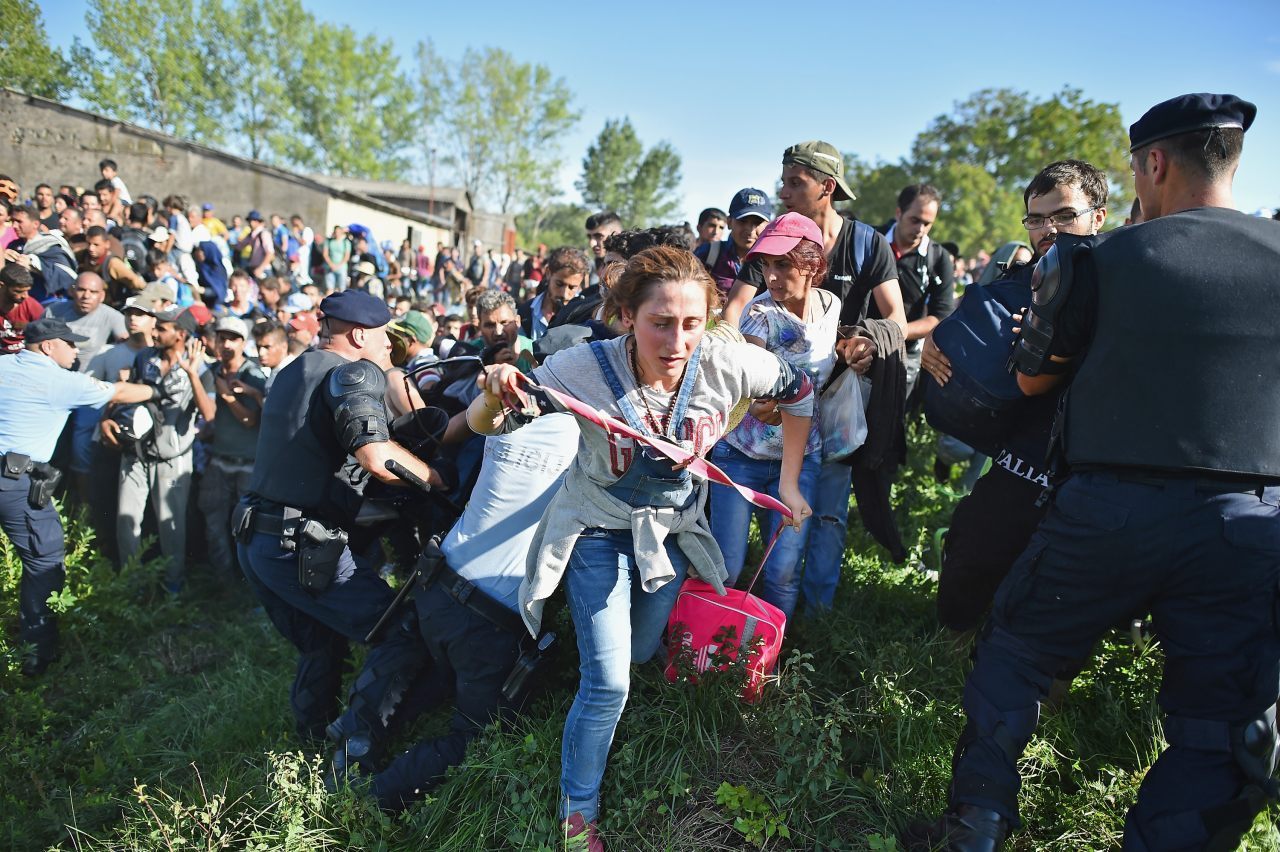

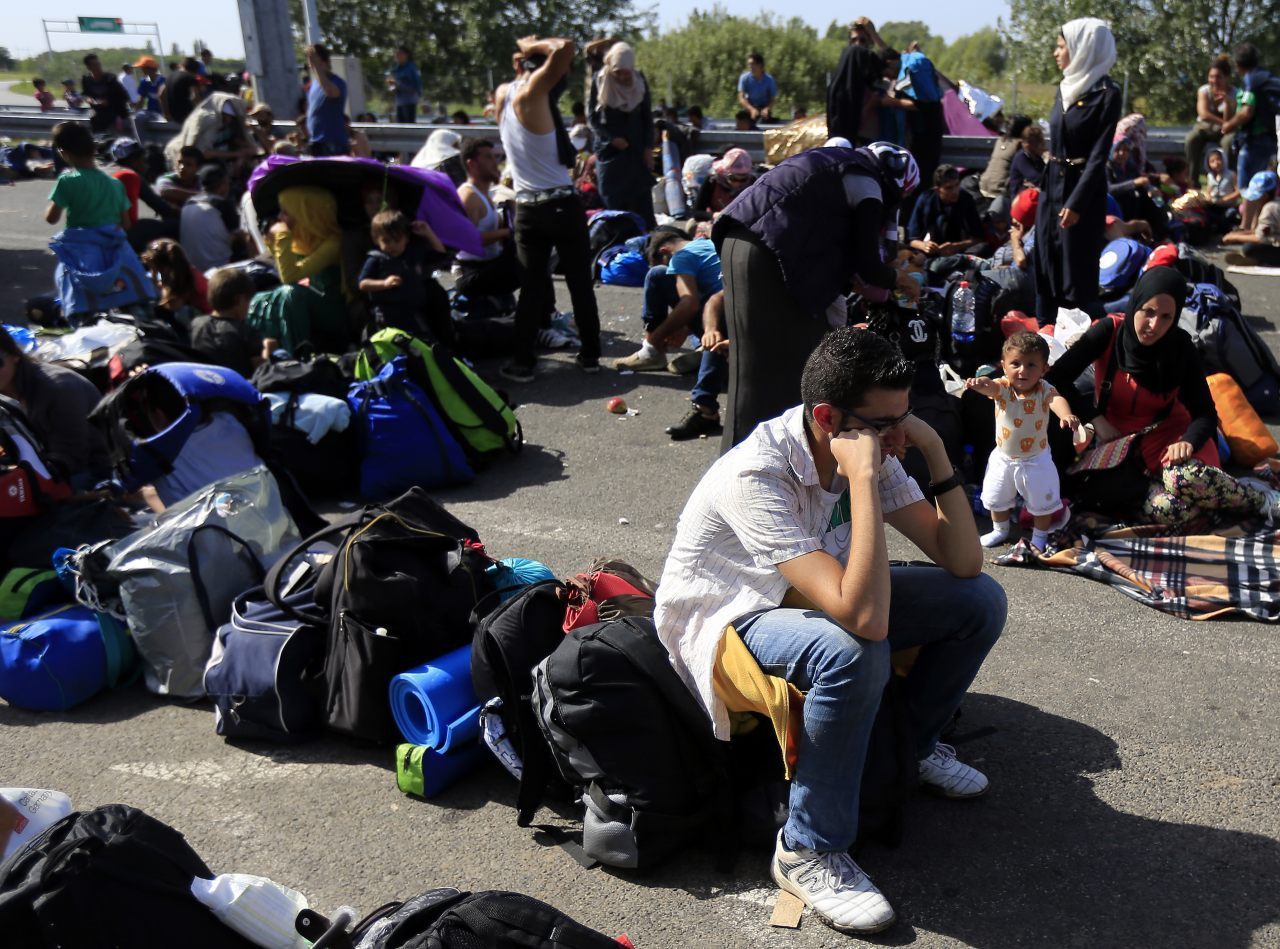

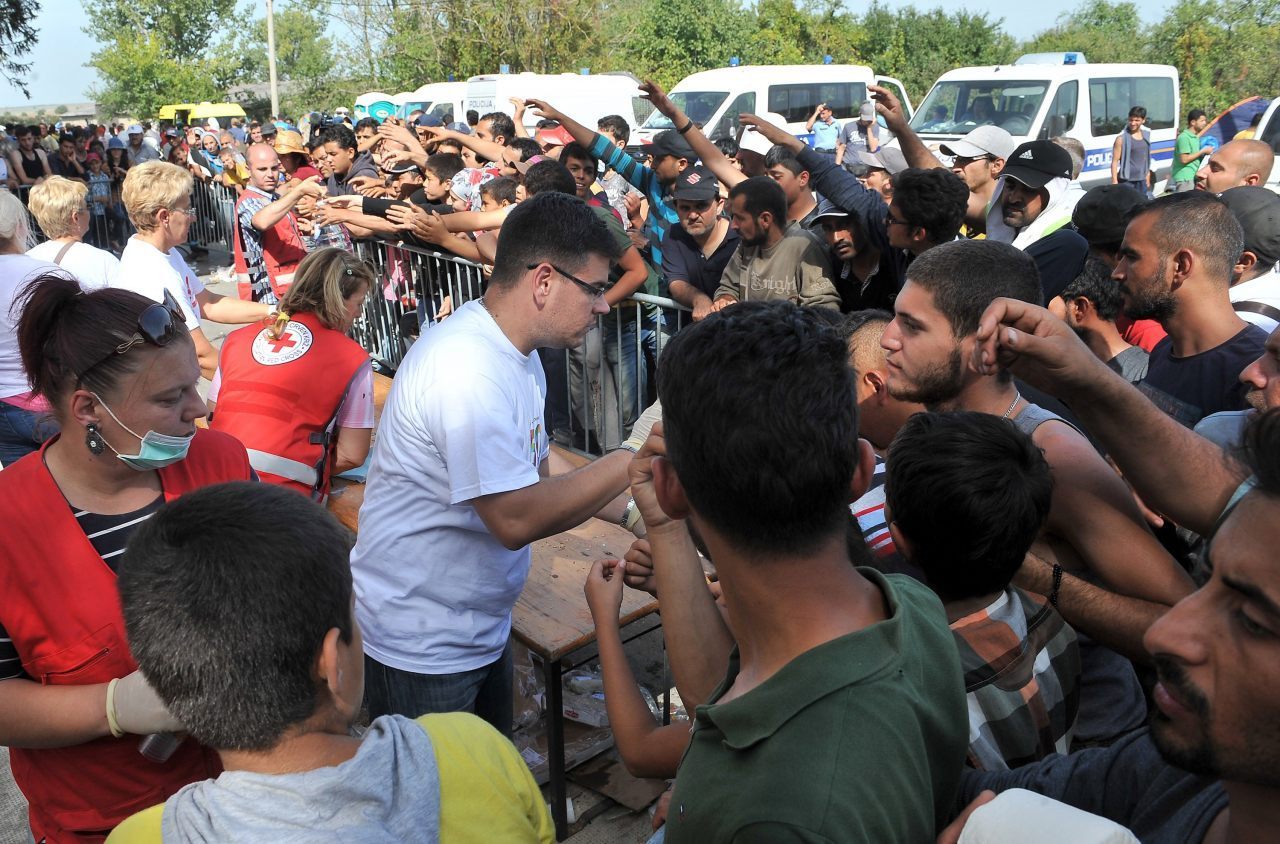

0 comments:
Post a Comment